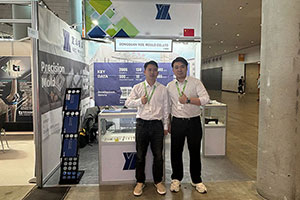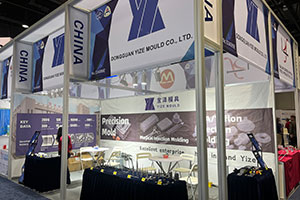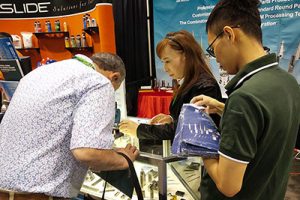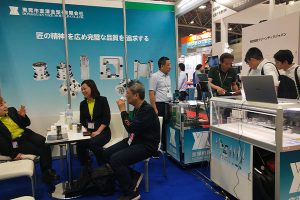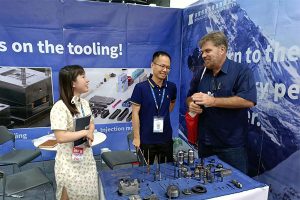Guide to Tungsten Carbide Detection
In the industrial field, tungsten carbide stands out for its high hardness and excellent wear resistance, playing a significant role in applications such as cutting tools, molds, and wear-resistant parts. […]
In the industrial field, tungsten carbide stands out for its high hardness and excellent wear resistance, playing a significant role in applications such as cutting tools, molds, and wear-resistant parts. However, the performance and quality of tungsten carbide largely depend on the precise control of its composition and manufacturing process. Therefore, effective detection of tungsten carbide is of great importance to ensure that it meets the predetermined performance standards. This article will provide a detailed introduction to the detection methods of tungsten carbide, including hardness testing, metallographic structure observation, and chemical composition analysis.
Hardness Testing: A Key to Precisely Measuring Performance
Hardness testing is an important means of evaluating the performance of tungsten carbide. The Rockwell hardness tester, especially the HRA scale, is commonly used for this purpose. This method is widely accepted in the tungsten carbide industry as it can provide quick and relatively accurate results.
当社の工場事業:超硬部品、金型部品、医療用射出成形金型、精密射出成形金型、テフロンPFA射出成形、PFAチューブ継手。電子メール:[email protected],whatsapp:+8613302615729。
Adequate Test Preparation
Before conducting the hardness test, it is essential to ensure that the sample surface is flat, free from oil stains and impurities. Additionally, the thickness and diameter of the sample should meet the requirements of the hardness tester. Generally, the sample thickness should be no less than 1.6 mm, and the surface roughness Ra should be less than or equal to 2 μm.
Standardized Test Procedure
Place the sample on the testing table of the hardness tester, making sure that the sample is perpendicular to the indenter. Then, follow the operating procedures of the hardness tester to carry out the test. During the test, the main testing force should be applied within 6 – 8 seconds, and the holding time of the main testing force should not exceed 2 seconds.
Proper Result Interpretation
Each sample should be tested at least 3 points, and the average value should be taken as the final result. The hardness value should be rounded off according to the specified rounding rules. If the hardness value does not meet the predetermined standard, it may indicate a quality problem with the tungsten carbide.
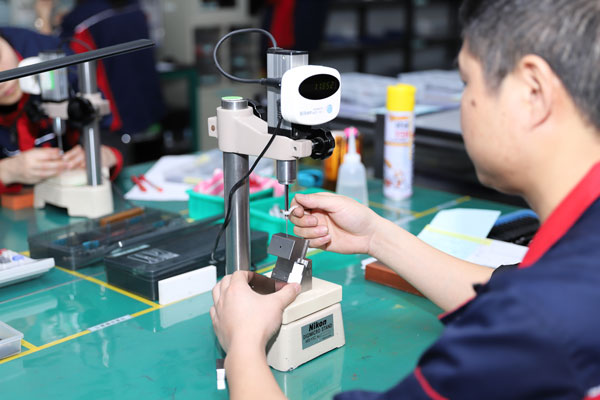
Metallographic Structure Observation: Unveiling the Microstructure Mysteries
Metallographic structure observation is an important method for assessing the microstructure of tungsten carbide. By observing it, we can understand the grain size, phase distribution, and possible defects of the tungsten carbide.
Exquisite Sample Preparation
First, it is necessary to prepare the metallographic sample, which generally involves steps such as cutting, mounting, grinding, polishing, and etching. When cutting, a high-power precision cutting machine and a diamond cutting blade should be used to ensure a flat cutting surface and minimize the heat-affected zone. Mounting and grinding-polishing aim to obtain a flat and smooth observation surface, while etching helps to more clearly display the microstructure of the tungsten carbide.
Detailed Observation and Recording
Use a metallographic microscope to observe the prepared sample. Pay close attention to the size, shape, and distribution of the grains, as well as the interfaces between phases and possible defects. These observation results can provide important evidence for the quality assessment of the tungsten carbide.
Chemical Composition Analysis: Decoding the Element Content
Chemical composition analysis is a crucial step in determining the content of various elements in tungsten carbide, which helps to understand the properties and potential problems of the alloy.
Reasonable Sampling and Preparation
Take samples from the tungsten carbide products, ensuring that the samples are representative. Then, treat the samples appropriately, such as by crushing and dissolving, for subsequent chemical analysis.
Accurate Analysis Methods
Spectral analysis, chemical analysis, and other methods can be used to determine the element content in the tungsten carbide. These methods can provide accurate data on the alloy composition, allowing us to judge whether it meets the predetermined chemical composition standards.
Other Detection Methods: Supplementing Performance Information
In addition to the three main detection methods mentioned above, other auxiliary detection methods can be carried out as needed, such as density determination and magnetic property testing. These methods can provide additional information about the performance and quality of the tungsten carbide.


